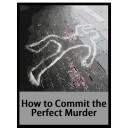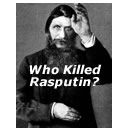False Positive
Forensic sciences have revolutionized law enforcement and the criminal justice system. But is its accuracy as ironclad as we are led to believe? The Vox investigative documentary False Positive explores the consequences of placing our unquestioning faith in this popular practice.
The film's exploration is centered around a gruesome crime dating back to 1984. In northern Milwaukee, the severely beaten body of a 63-year old woman was found lying in an empty lot. Investigators needed direction for their investigation, and called upon the services of a forensic odontologist to examine the bite mark impressions which were left on the victim's body. Based on his findings, a suspect was soon apprehended. A young man named Robert Lee Stinson was charged with the crime and put on trial based on a single missing tooth.
The central players in this story didn't realize that this new breed of science - where dental impressions are used to identify bite marks on a crime victim - is not a science at all. In fact, it had never before been tested, and it is not a quantifiable practice like DNA testing. According to researchers, the error for margin is high and there are too many unreliable variables at play when analyzing results, including skin texture and bite depth.
However, these uncertainties did not enter the conversation throughout the investigation and subsequent trial. The presence of an authority figure such as the odontologist can effectively trump most doubts, even if the expert's findings are sloppy, incomplete and unjustified. Law enforcement capitulated to the odontologist's expertise and failed to adequately scrutinize the visual evidence for themselves. In the end, the trial jury did the same.
Stinson's wrongful conviction was later overturned in 2009 based on the ambiguous nature of this pseudo-science. He lost 23 years of his life based on faulty science and a willful misreading of the evidence.
False Positive calls for a more thorough study of bite mark identification and its efficacy in high-stakes criminal investigations. Until this is done, countless others will run the risk of wrongful incarceration. The film's approach is not dry and academic; it pulsates with an urgent sense of activism.




Forensic science is a term much like Army intelligence i.e. an oxymoron!
Even DNA often serves as misleading evidence, and people are too awed to realize the potential for things to go wrong there, too.
An outstanding, gripping documentary. Unfortunately, there are also other examples of such weakly-underpinned "science" that are given weight because they aretestified to by seemingly authoritative proponents. Blood spatter analysis and hair matching are two that come to mind. If you want to know the devastating impact that one man's mistaken testimony can have on many people's lives, look up former doctor Charles Randal Smith.